12 trees for fall color: grow these for unbeatable autumn interest
These beautiful trees for fall color will brighten up your backyard with vibrant shades of red, orange and yellow during the crisp days of autumn


While it’s sad to see the end of summer, the best trees for fall color bring with them their own delights. Along with ripening berries, and the arrival of late flowering blooms, the fantastic spectacle of brilliantly colored shrubs and trees come into their own, as the leaves start to die back.
It’s a final fanfare to the year and tells the tale of the weather and growth patterns that the trees have experienced. The first colors to appear are usually the yellows, as the leaves stop photosynthesizing, then the burnished oranges and reds take center stage before the tree sheds the last of its leaves to go into winter dormancy.
The intensity of the colors is influenced by dry weather, cold nights, and bright sunny days. All of these affect the production of the natural sugars in the leaves that then turn red.
In a year of drought, some trees might shed their leaves early to cope with the lack of water, and equally, very wet weather can quite literally dampen the displays on these and even the best evergreen trees.
Inject rich seasonal tones with these stunning trees for fall color
On those perfect fall days of crisp temperatures, brilliant blue skies and low sunshine, take time to go for a walk or just sit for a moment to admire your backyard trees, absorbing the colors and appreciating the changing season.
And while parks and woodlands may put on the best shows of the season, there are trees to suit all sizes of gardens, so think about bringing some of these trees for fall color into your plot.
1. Ginkgo biloba
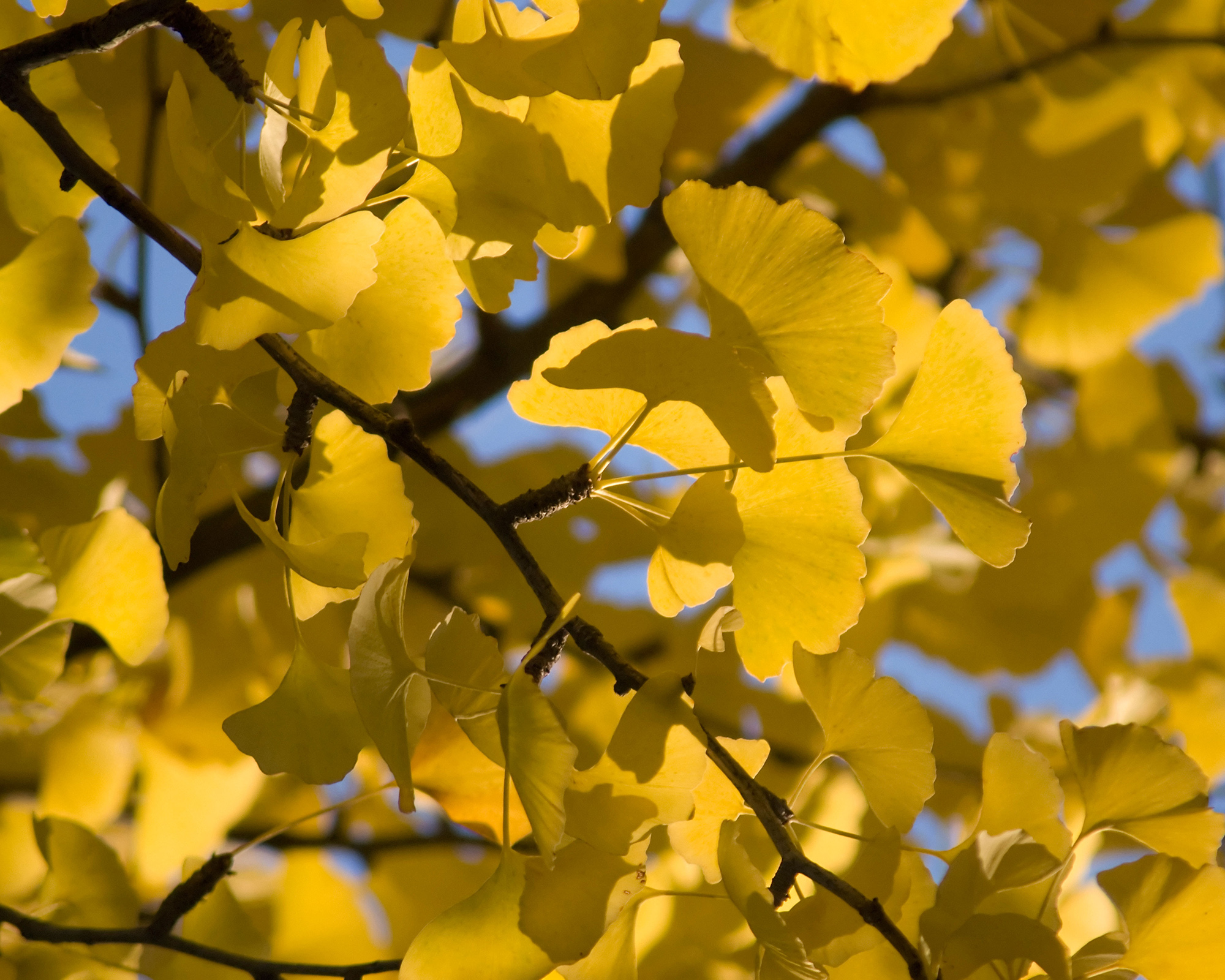
- Hardiness: USDA zones 5-9
- Height: 50ft (15m)
- Spread: 30ft (9m)
There is no doubt that an avenue of ginkgo trees is a spectacular sight on a sunny fall day, when the low sunlight catches the golden leaves. It’s all the better when it’s a busy urban street, where they are often used as a front yard tree because they’re so tolerant of pollution and for their tall, narrow habit and long lifespan.
This ancient tree species is also known also as the maidenhair tree as the distinctive foliage is said to be reminiscent of maidenhair ferns. In larger gardens, it’s worth considering a ginkgo as you won’t find a more unique leaf shape which really sings out loud, when it turns to golden butter yellow in the fall.
There are several varieties to consider when choosing a tree for your garden, such as the slightly smaller, slow growing male variety, Ginkgo biloba 'Saratoga', with a more pendulous habit and slightly more raggedy looser leaves, that grows to around half the height of its species parent.
2. Sorbus commixta ‘Embley’
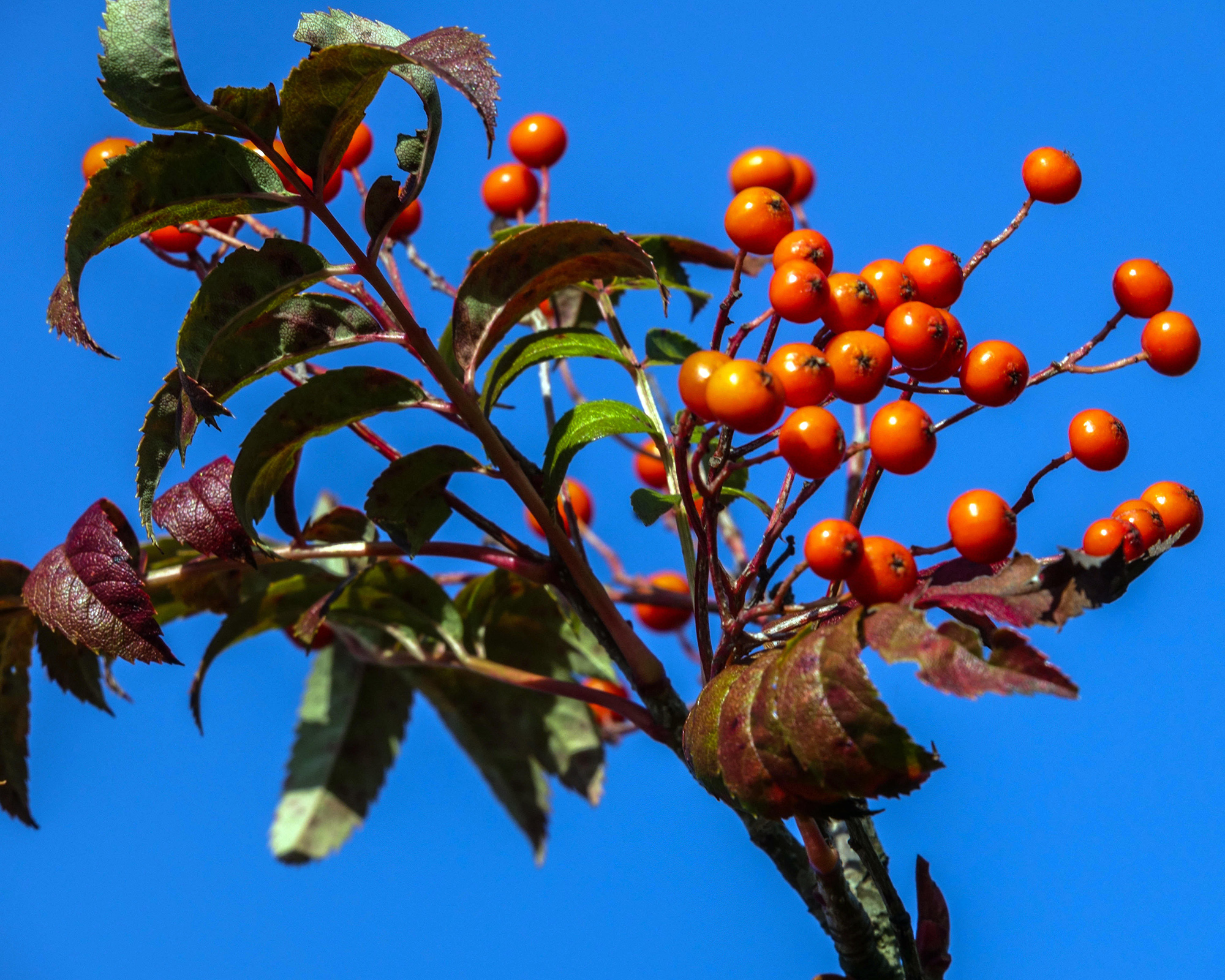
- Hardiness: USDA zones 3-6
- Height: 20ft (6m)
- Spread: 13ft (4m)
The rowan, or scarlet mountain ash, is a beautiful medium-sized tree for fall color, with many varieties to choose from. The finely cut, pinnate leaves turn spectacular shades of fiery reds and oranges at the end of summer.
As well as being brightly colored, it's also a great tree with berries with pink, orange or red varieties, which make them a magnet for birds too.
Sorbus commixta ‘Embley’, also known as the Chinese scarlet rowan, has rich red fall foliage colors. It’s a reliable choice with a compact habit, so is great for both small spaces and most other locations. Although it prefers soil that tends towards the acidic end of the pH chart.
3. Acer griseum

- Hardiness: USDA zones 4-8
- Height: 20ft (6m)
- Spread: 15ft (4.5m)
It's certainly worth learning how to grow acers as they offer so much in terms of foliage interest, from fabulous finely cut leaves, to larger, classic maple leaf shapes with fall colors that are among the most spectacular.
Eric Hsu of Chanticleer Garden in Pennsylvania, recommends Acer japonicum and Acer palmatum as classic choices of trees for fall color.
At New Wood Trees in Devon UK, where some 12,000 trees are grown for designers and nurseries around the UK, company director Philip Nieuwoudt says, ‘Acer griseum is one of the best for smaller gardens. Its slow growing habit makes it a good choice and it also does well in containers.’
When choosing the right type of Japanese maple for your garden, the paperbark maple is one for your list as it has amazing fall colors plus the added bonus of attractive winter bark and stems for extra interest after the fall leaf display has come to an end.
4. Amelanchier lamarckii
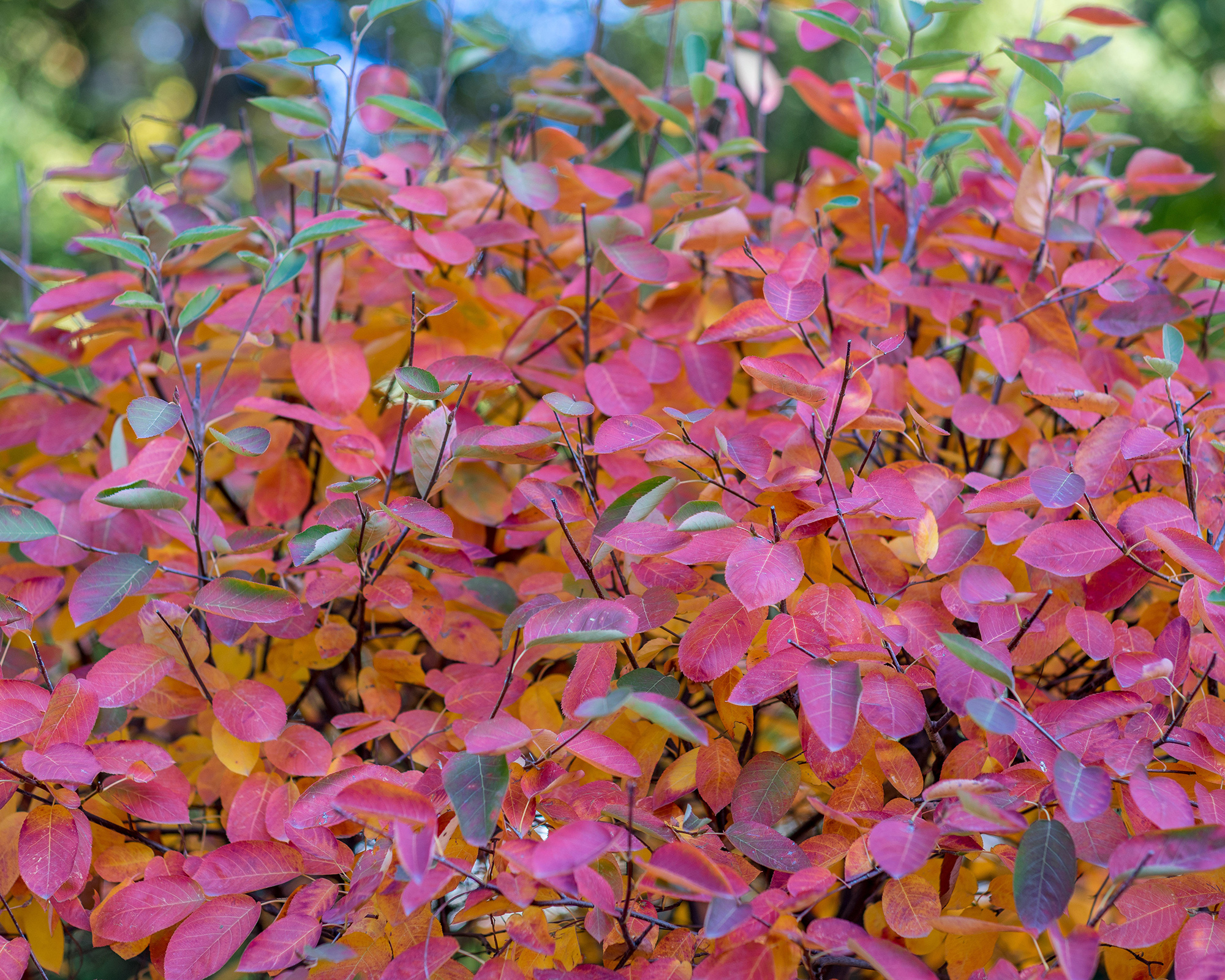
- Hardiness: USDA zones 4-8
- Height: 15-25ft (4-8m)
- Spread: 15-25ft (4-8m)
It’s hard to find a list of best trees for small gardens that doesn’t feature the North American Amelanchier lamarckii, and it’s also one of the best trees for fall color. Also known as Snowy Mespilus or juneberry there are some very good reasons why it’s so popular with garden designers.
It has a good compact habit as a multi-stem specimen, with pretty spring flowers, edible berries, and last, but not least, beautiful fall foliage. It’s also a low maintenance tree, being very easy to grow, reliable and trouble free.
So while it’s on the verge of being over-used, when you see a good amelanchier specimen, it’s easy to understand why.
- Buy Amelanchier lamarckii in the US: view at Amazon
- Buy Amelanchier lamarckii in the UK: view at Thompson & Morgan
5. Prunus serrulata

- Hardiness: USDA zones 6-8
- Height: 15-25ft (4-8m)
- Spread: 15-25ft (4-8m)
Ornamental cherry trees are usually celebrated as being one of the best flowering trees, for the profusion of spring blossom that they bring to the backyard. But when you’re choosing a garden tree, you need it to work across different seasons, particularly in smaller plots.
So if you love cherry blossom, look for a specimen that will have something to say for itself later in the year too. Philip Nieuwoudt recommends the Japanese cherry Prunus serrulata species for their autumn colors.
There are many stunning Prunus serrulata cultivars to choose from, including ‘Kanzan’, ‘Amanogawa’, ‘Royal Burgundy’ and ‘Sunset boulevard’ among others. A good smaller sized tree, like most cherries, it demands a site where it can show off – centre stage in a lawn or in a mixed border, underplanted with perennials and smaller shrubs that work well for landscaping around trees of this type.
6. Cercis canadensis ‘Forest pansy’
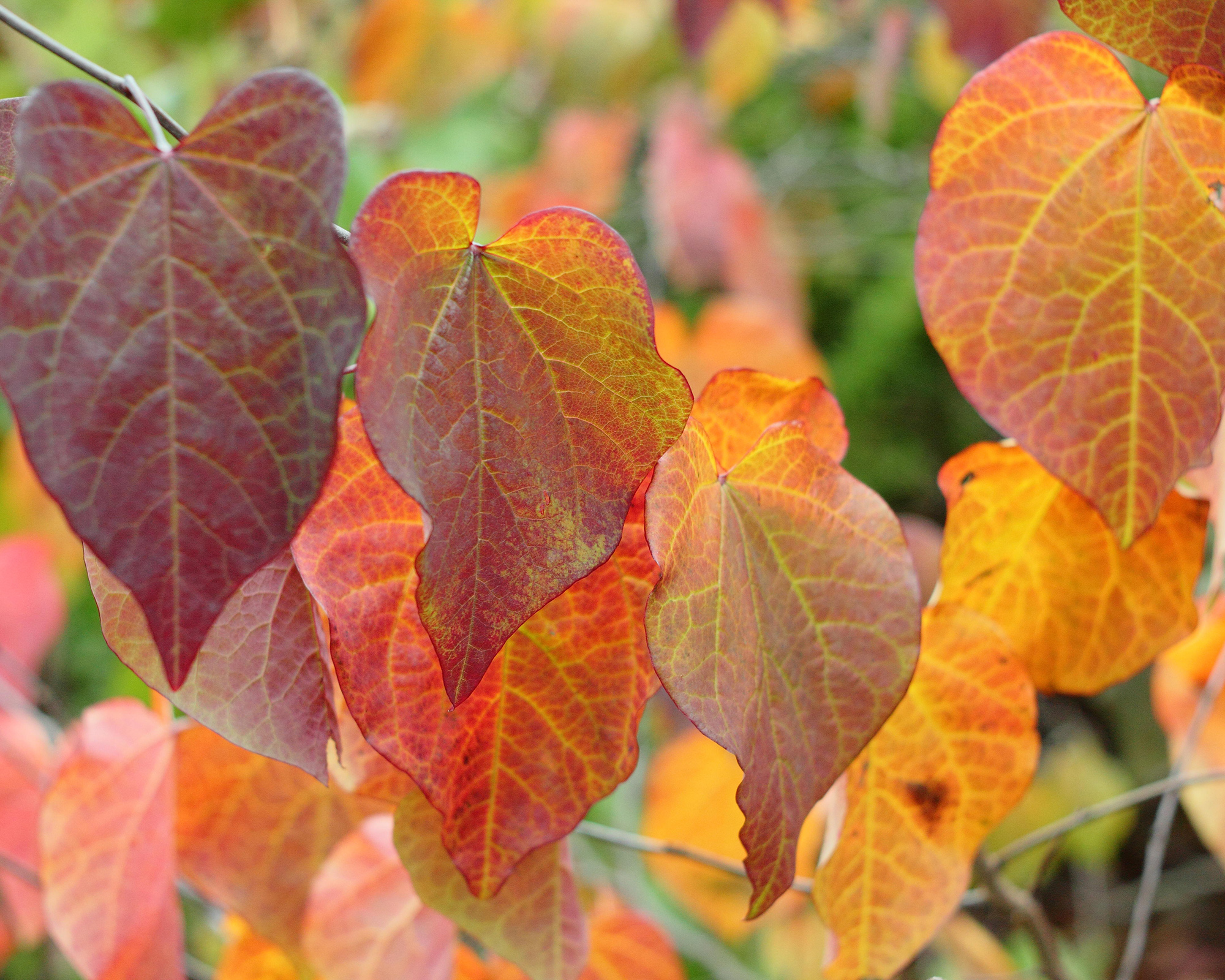
- Hardiness: USDA zones 5-9
- Height: 20ft (6m)
- Spread: 25-35ft (7-5-10.5m)
The heart-shaped foliage of the eastern redbud tree looks pretty stunning all year round, not just in fall, when it turns from deep burgundy to shades of gold.
So if you want a tree that keeps turning heads right through the year, and goes out in a blaze of glory, Cercis is a really good genus to consider. Easy to grow, it has a compact habit that tends towards multi-stem and makes it suitable for smaller gardens.
‘Forest Pansy’ is a variety that is particularly easy to grow. Other Cercis canadensis cultivars worth considering are ‘Eternal Flame’, which is great if you're looking for the best trees to grow in pots, or ‘Golden Falls’ which has a weeping habit and lime-colored leaves.
- Buy Cercis canadensis in the US: view at Amazon
- Buy Cercis canadensis in the UK: view at Gardening Express
7. Parrotia persica ‘Vanessa’
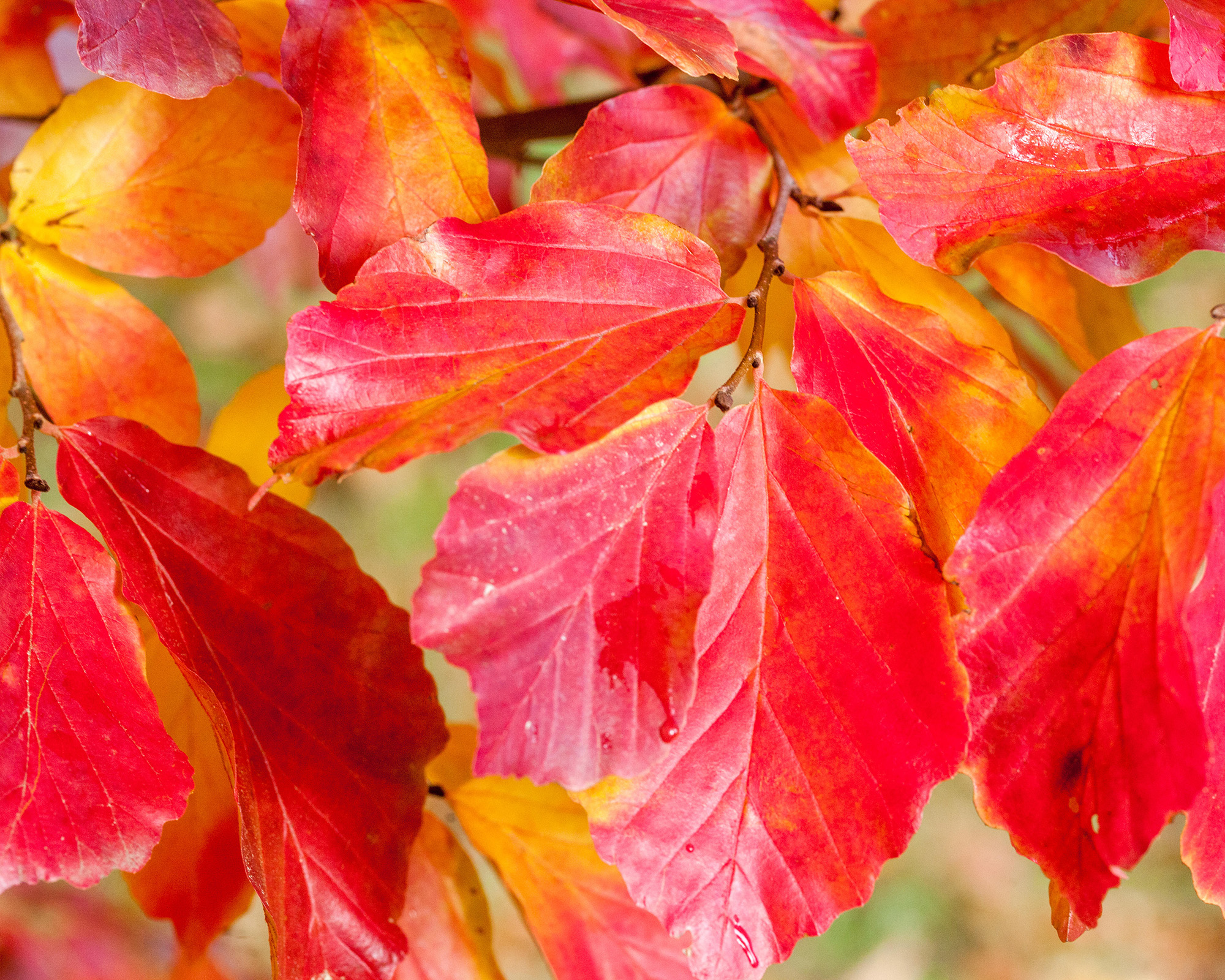
- Hardiness: USDA zones 6-9
- Height: 15-40ft (4.5-12m)
- Spread: 10-20ft (3-6m)
Recommended by both Kevin Martin, head of the tree collection at the Royal Botanic Gardens, Kew, and Eric Hsu at Chanticleer Gardens, the Persian ironwood tree is a fall stunner.
The cultivar ‘Vanessa’ is such a great choice for the garden, with a full four seasons worth of interest. From winter bark and flowers, to a great summer canopy, as well as the spectacular show it puts on in the fall.
The colors at this time of year are a fiery collection of vibrant golds and reds of varying shades. It’s a larger tree, but slow growing so it can work in smaller gardens. But it does need space so that it can be appreciated, so don’t crowd it!
If you have it in an overcrowded spot then learn how to move a tree so you can relocate it to some place more spacious.
8. Nyssa sylvatica

- Hardiness: USDA zones 6-9
- Height: 30-50ft (9-15m)
- Spread: 20-30ft (6-9m)
A beautiful ornamental tree with glossy foliage that turns brilliant orange, red and yellow in the fall. This is also known as the Black Gum or tupelo tree. It’s not a fast growing tree, so can be planted in an average size garden as a stand out specimen tree – it will reach full size in about 20 years.
Nyssas grow in most well-drained soils but will tolerate damper soils too. At the National Trust’s Sheffield Park And Garden in the UK, you’ll can see many different nyssa cultivars.
Assistant head gardener at Sheffield Park, Chris Skinner says: 'We have a huge variety of deciduous native, and non-native tree and shrub species, which all reach their peak fall color at different times.
'We also have one of the largest collections of Nyssa sylvatica in any garden in England, including our own Nyssa ‘Sheffield Park’ which, in a good year, turns a kaleidoscope of red, orange and yellow,' adds Chris.
- Buy Nyssa sylvatica in the US: view at Amazon
- Buy Nyssa sylvatica in the UK: view at Thompson & Morgan
9. Liquidambar styraciflua
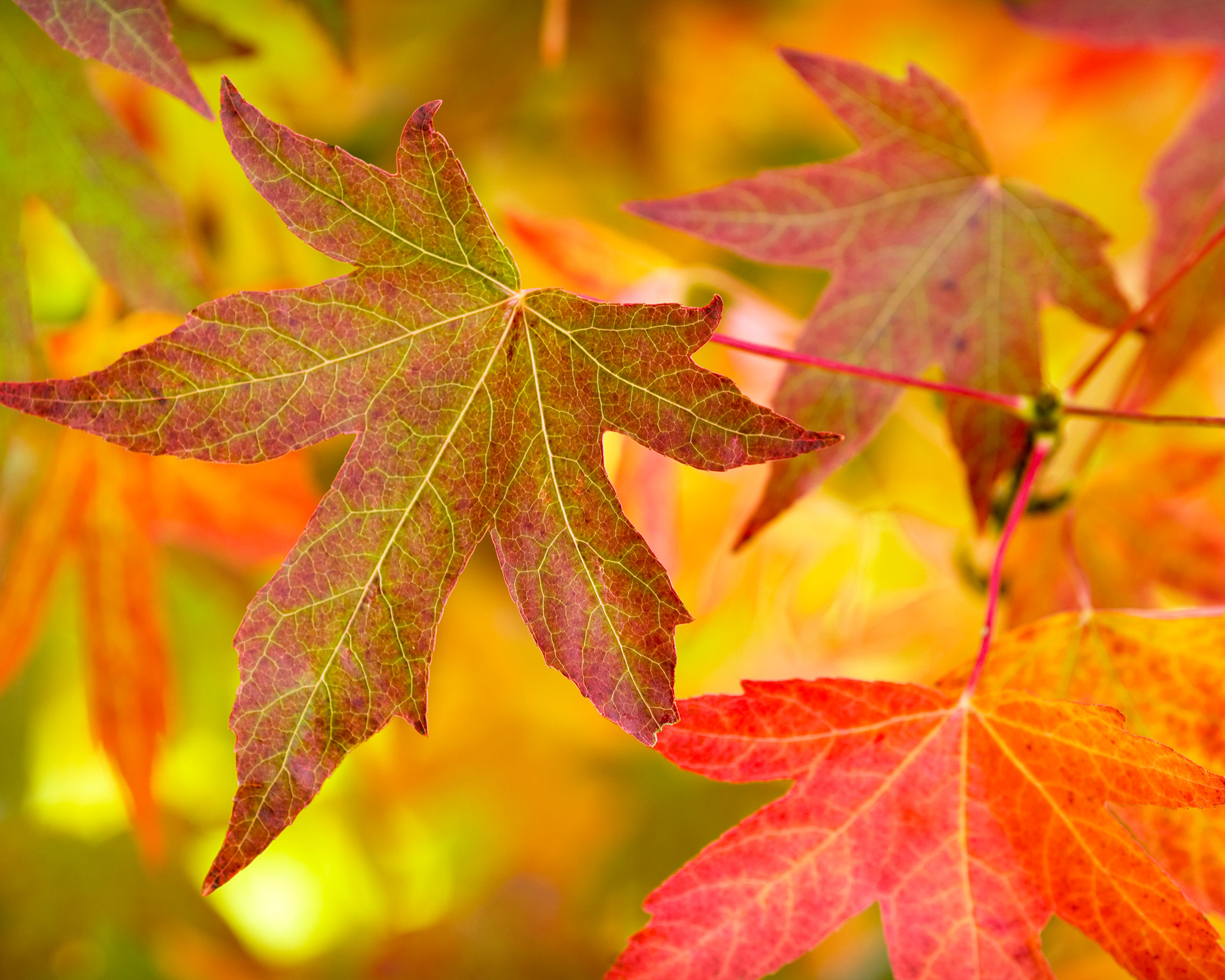
- Hardiness: USDA zones 5-10
- Height: 60ft (18m)
- Spread: 40ft (12m)
In a parkland setting, a liquidambar tree always stands out in fall. With its broad, palmate leaves, turning brilliant shades of burnished copper into red. And that distinctive aroma when crushed underfoot, just adds to the sensory delight.
It’s also known as sweetgum, partly for this tantalizing and unusual scent. However, liquidambar is definitely a tree with red leaves for larger landscapes, being tall, broad and statuesque. It's also a good choice for damp soils with other bog plants, or riverside settings.
If you have the space to grow one, cultivars to consider are ‘Lane Roberts’ and ‘Worplesdon’.
- Buy Liquidambar styraciflua in the US: view at Amazon
- Buy Liquidambar styraciflua in the UK: view at Gardening Express
10. Crataegus persimilis ‘Prunifolia’
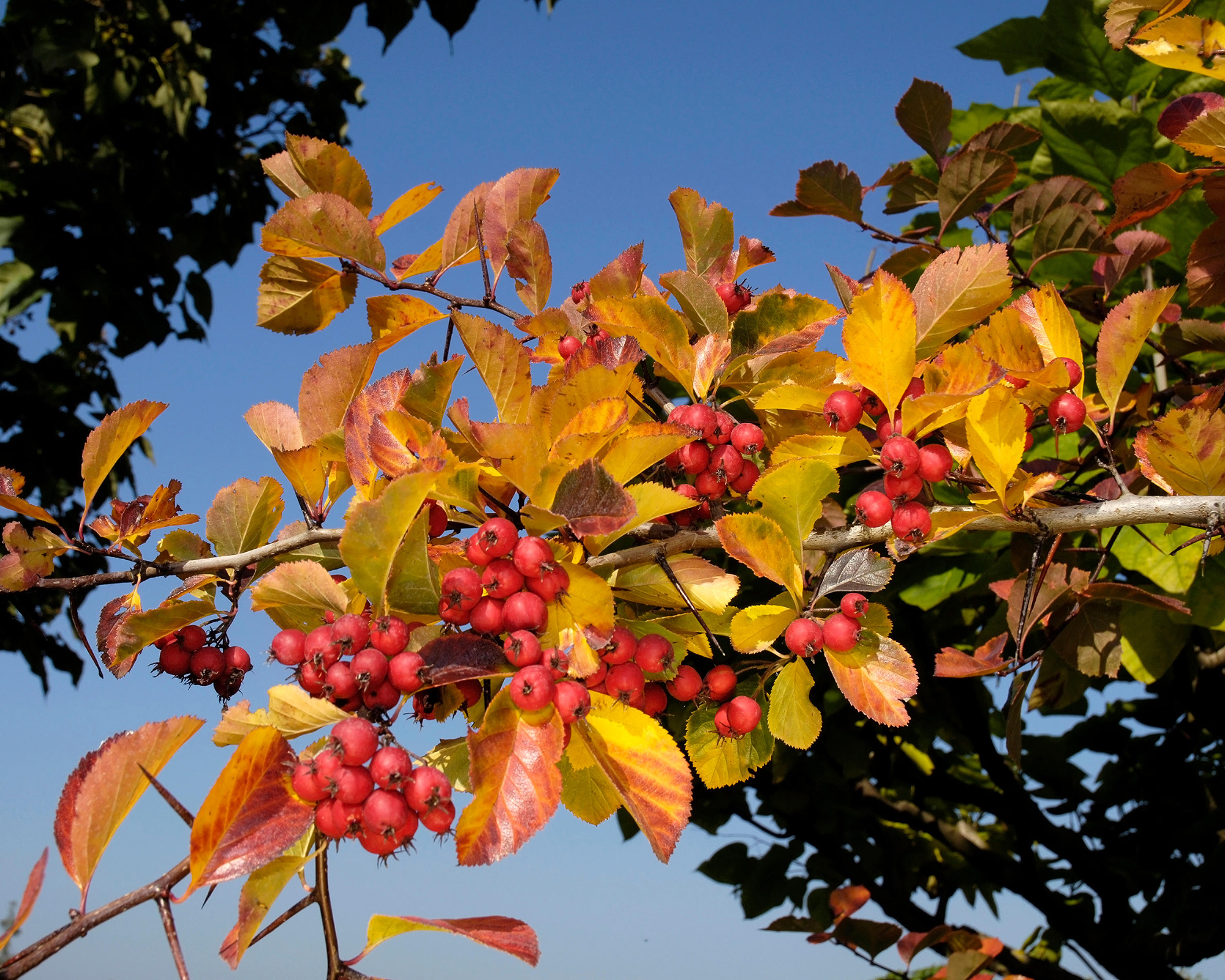
- Hardiness: USDA zones 6-7
- Height: 25ft (7m)
- Spread: 25ft (7m)
A great choice for smaller gardens, the North American hawthorn will bring interest all year round, with spring flowers and berries, before it goes out in a blaze of glorious fall colors.
It’s also a magnet to pollinators and birds, so with this single tree you can tick several gardening boxes. It suits full sun or works as a tree for shade, but will tolerate most conditions and it’s easy to grow.
It will need a little pruning to keep to the desired shape and size, but it is thorny, so you need good protection. Plant as a solo specimen, or in a mixed border, to create a wildlife haven.
11. Cornus florida

- Hardiness: USDA zones 5-9
- Height: 12ft (3m)
- Spread: 12ft (3m)
A great tree for fall color in smaller gardens, Cornus florida follows its show of summer flowers with fabulous fall foliage colors. There are several varieties to consider, depending on whether you prefer white or pink flowers. But the leaves generally turn through shades of red and purple with varying degrees of intensity.
These can also be fruit trees, with small fruits appearing as an added ornamental feature, which are also very attractive to birds. Cultivars to try include C. florida ‘Cherokee Brave’ or ‘Cherokee Sunset’ for specimen trees with glamorous looks, and a reputation for being tough and easy to grow.
12. Rhus typhina
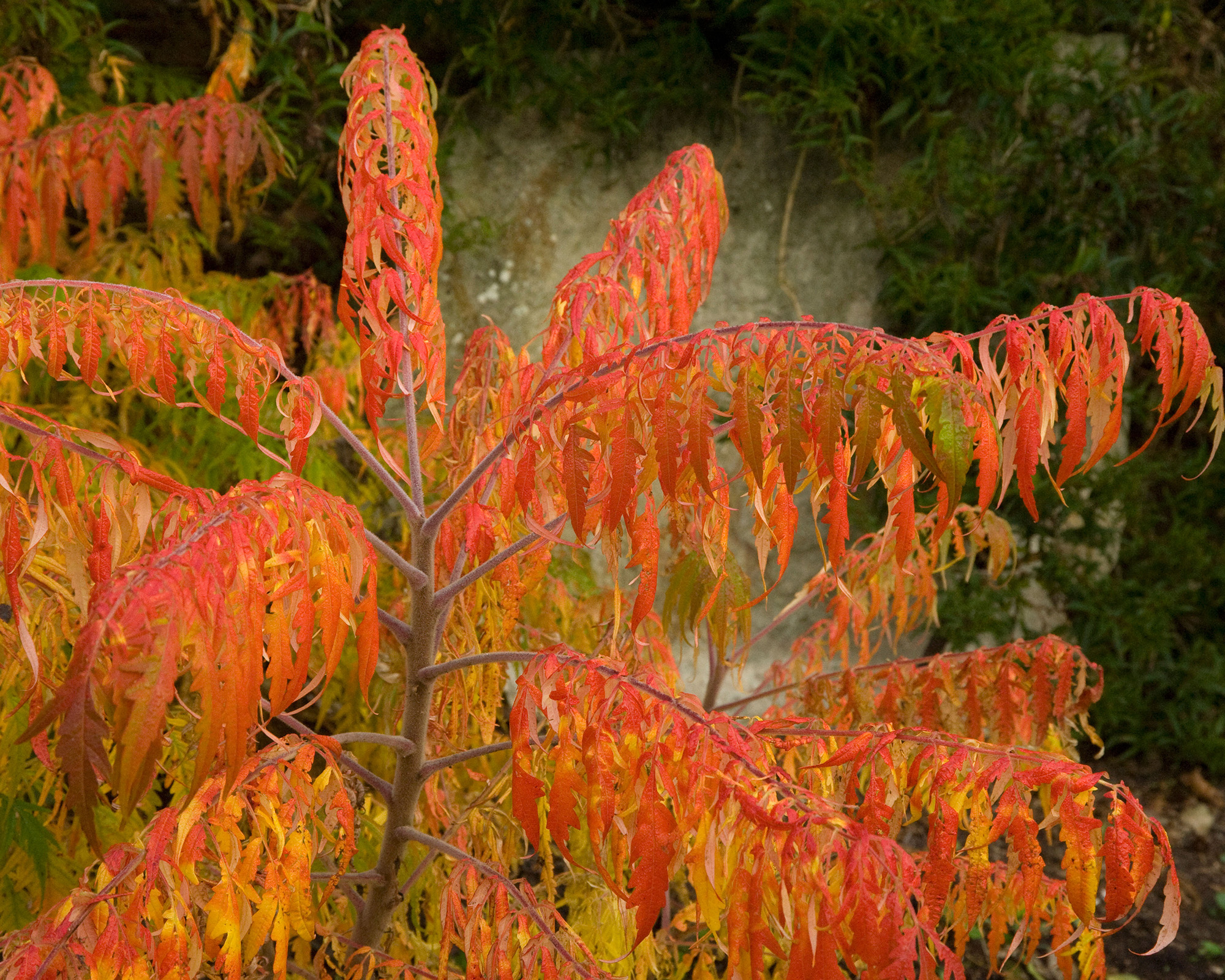
- Hardiness: USDA zones 3-8
- Height: 15ft (4m)
- Spread: 20ft (6m)
Rhus typhina, is a large shrub or small tree, native to North America, with fiery fall coloring. It has an open, multi-stemmed form and it makes a real impact in smaller backyards or as a mid-storey woodland plant for gardens.
With strange-looking flowers and fruit earlier in the year, its real glory season is the fall, when it turns through shades of vibrant red, orange and yellow. The leaves are pinnate – made up of smaller leaflets – which gives the tree a slightly ‘shaggy’ appearance, adding to the flame-like effects.
It’s also known as the Staghorn Sumac for the slightly hairy young branches, that resemble the velvety nap of male deer antlers.
What is the most brilliant colored tree in fall?
For the most brilliant fall colors it’s hard to beat Euonymus alatus. Technically a large shrub, it grows to around 15ft (4.5m), so try planting a bare root tree and it makes a great ‘small tree’ choice for fall leaves in a smaller-sized garden.
Also known as the winged spindle tree, it really lives up to its name of Fire or Burning Bush as the rich shades of the leaves will stop you in your tracks. Add to this the stunning orange and pink fruits and it really puts on quite a psychedelic display. Grow in US hardiness zones 3-9.
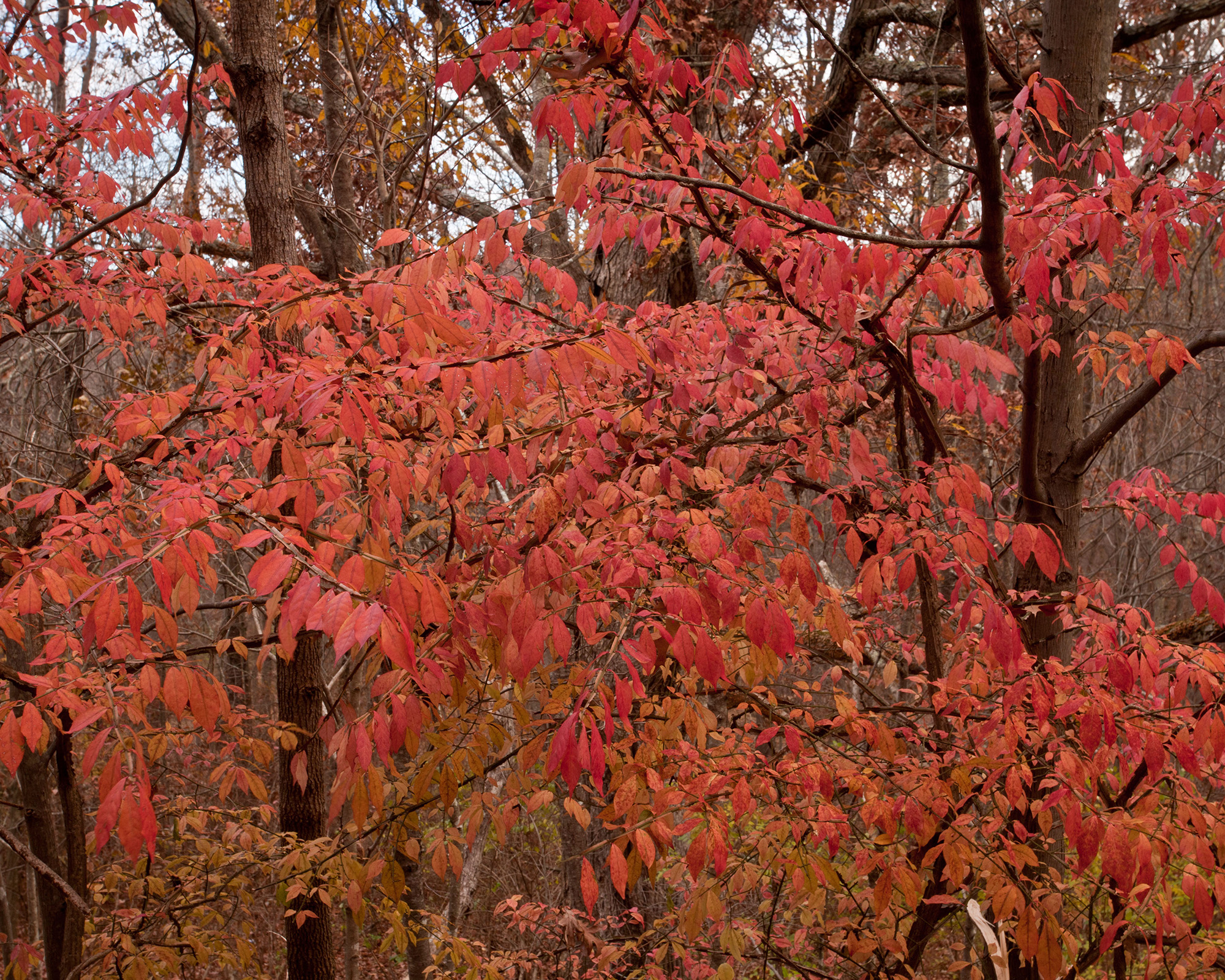
What tree turns purple in fall?
While there are many trees and shrubs with rich, deep purple leaves through the summer, in the fall, these tend to turn through shades of red and yellow.
For a tree that retains its purple coloring into the fall, the purple silver birch, Betula pendula ‘Purpurea’ has foliage that deepens in color before turning bronze as the leaves are shed. Grows in US hardiness zones 2-7.

What trees are gold in the fall?
There are several trees that put on a stunning show of golden leaves, including betulas and gingkos, However, it’s hard to beat the coral bark maple, Acer palmatum ‘Sango kaku’.
This really glows in the fall light, with golden yellow palmate leaves that contrast gloriously against the coral red stems. Try underplanting with types of red twig dogwood. Grow in US Hardiness zones 5-8.
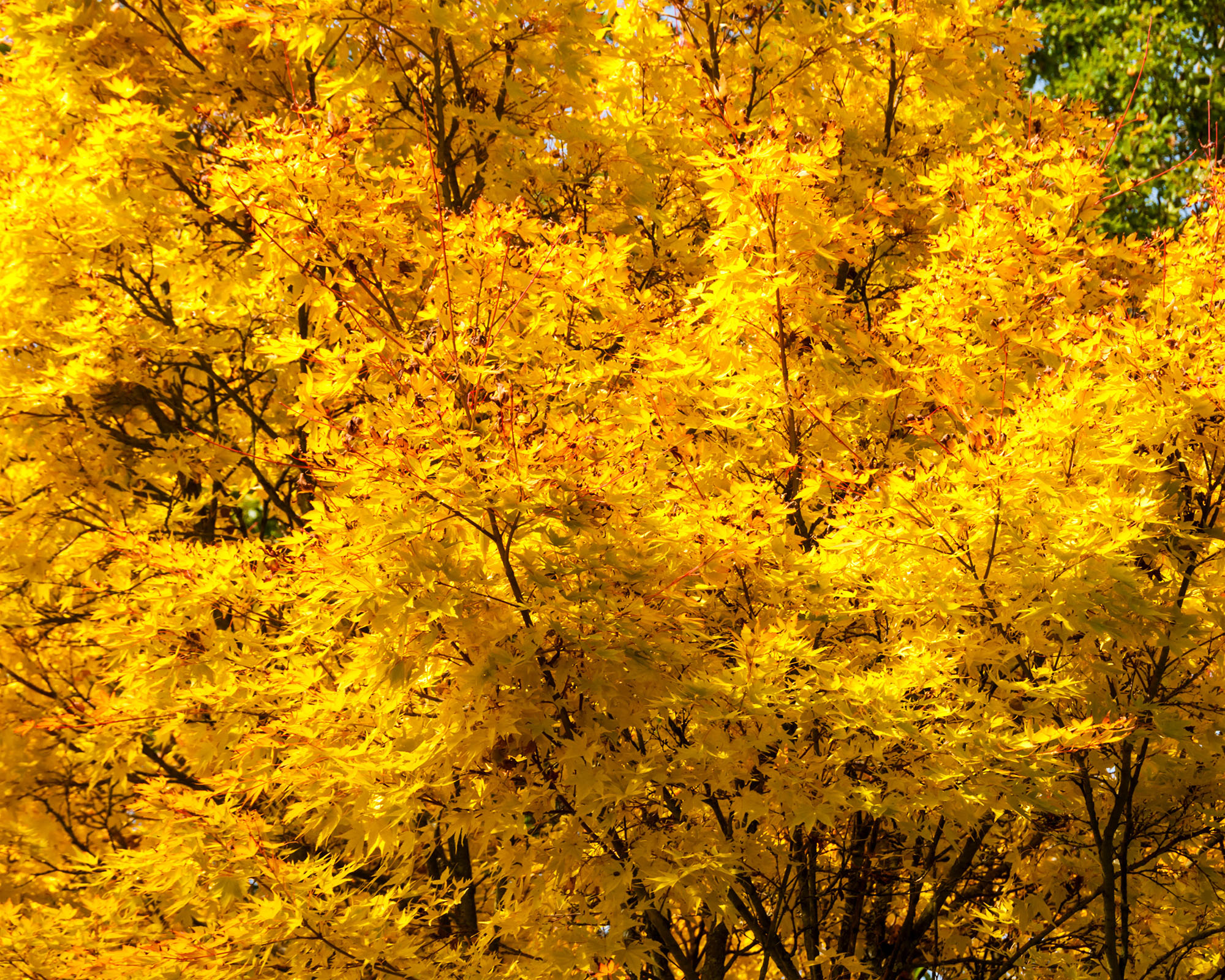

In her years of gardening, Camilla has designed planting schemes for gardens large and small in and around London, written about plants and how to grow them, and worked on BBC gardening TV shows. She's passionate about sharing tips, advice and the joy of plants in this great community of gardeners that we’re all part of, and she now also works as a therapeutic horticulturist, teaching growing for wellbeing and mental health. Her unfulfilled ambition is to crack the ultimate dog-friendly garden - she thinks getting it right depends more on the dog than the plants...
